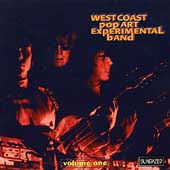| Volume One | ||||
|---|---|---|---|---|
 | ||||
| Studio album by | ||||
| Released | 6 June 1966 | |||
| Recorded | 1965–1966 | |||
| Genre | Psychedelic rock, folk rock, blues rock | |||
| Length | 51:35 | |||
| Label | FiFo (original) Sundazed (rerelease) | |||
| Producer | Bob Irwin | |||
| The West Coast Pop Art Experimental Band chronology | ||||
| ||||
| Review scores | |
|---|---|
| Source | Rating |
| AllMusic | |
| Uncut | |
Volume One is the first album recorded by the psychedelic rock band the West Coast Pop Art Experimental Band. It was first released in 1966 on the small FiFo Records label. It was reissued in both compact disc and vinyl in 1997 by Sundazed. [2] The album features covers of pop classics such as Richard Berry's "Louie, Louie" and the Kinks' "You Really Got Me". The songs mellow out into a blues/folk style with covers of Bob Dylan songs. [3]
Contents
Most of the material was completed before Bob Markley was included in band activities. Still, Markley's presence was evident on tracks like "Don't Break My Balloon" and "If You Want This Love", in which he contributed vocals to the songs. [4]